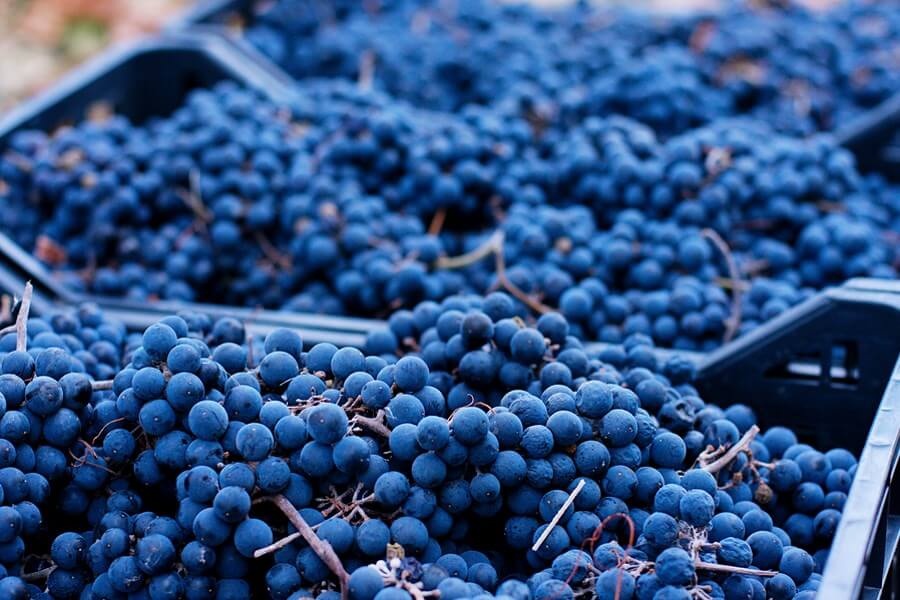The development of wine making was a turning point in human history. During the wine making process, the utilization of grape skins cannot overemphasized.

Share this article
The grape skin is the external layer of the fruit of the wine grape. Grapes, and Grape Skins come in different colors – could be either green, red or purplish red. They are very important components in wine making. It also helps protect the content of the wine grape. In addition, grape skins influence color and final flavor of wines produced from it.
Furthermore, grape skin gives wine its flavour, tannin, aroma, colour and also adds yeast (natural) to the wine. This is to say that the contents of the grape skin determines the quality of wines produced. Within the field of wine making, comprehensive knowledge of skin components and uses are crucial. Proper extraction, and the influence of grape skins on the aging process are invaluable. They also add unique health benefits to the wine!
Grape Skins In Wine:
There are basically two types of wine which are the red wine and the white wine. Including all components of grape skins within the wine, gives red wine its color. However, the production of white wine involves the separation of grape skins, removing the phenolic components of the grapes skin. This explains taste and color of white wines.
During the fermentation process, a crucial step is the extraction of anthocyanins, aroma precursors and tannins from the skin. However, they have separate extraction methods. The extraction of colour starts at the beginning of the fermentation process, extracting most of the pigments in less than three days, while tannin extraction slows down gradually as fermentation proceeds.
During fermentation, 3 major phenolic components extracted from grape skins: Tannins, anthocyanins and aroma precursors.
Let’s take a look at their usefulness in red wines:
The tannins extracted from the grape skin is responsible for the bitterness and astringency of red wine. The tannins produced by the grape skin is one of the reasons why it is a useful ingredient in red winemaking.
Tannins:
The tannins extracted from the grape skin is responsible for the bitter taste and astringency of red wine. The tannins produced by the grape skin is one of the reasons why it is a useful ingredient in red winemaking. Tannins are like the cornerstone of red wines. They bestow structure and ageing ability to wines. They are also responsible for the mouth-filling sensation in aged wines. Another function of tannins is that they help to preserve wine, helping to prevent spoilage and oxidation of wine during the ageing process.
Anthocyanins:
The purplish-red colour of certain wines is as a result of a pigment called anthocyanin. Anthocyanoplasts are responsible for containing the red pigments, located on the outer skin of the grapes. Anthocyanins are responsible for the first and one of the most important attributes of any wine important, which is its colour. The colour of a wine influences its acceptance.
Aroma Precursors:
Aroma precursors are molecules extracted from grapes, and they have the ability of stimulating the sense of smell through structural-shape and vibrational mechanisms. They are mainly located in the grape skin cells. They play a very important role in the aroma development of wines. Treatments such as cold soaking, pre-maceration, and enzyme treatments are majorly used to release these precursors into the juice and also for the enhancement of the quality of the wine.
Factors That Affect Influence Of The Grape Skin In Wine:
Temperature:
Temperature is a very important factor that affects the release of the phenolic components of the grape’s skin. At high temperatures, the amount of extracted phenolic compounds from the grape skin becomes simultaneously high. Temperatures higher than 50 degrees tend to destabilize phenolic compounds.
Length Of Skin Contact:
The red color and hues in wine are a result of the grape skins. Prior to the introduction of grape skins, the juice/pulp of grapes are clear or green in color. After harvest, the grapes are compressed to form a must. This must is then fermented. Duration of the fermentation process fluctuates based upon several factors. Factors include the winemaker and the qualities desired in the wine being produced. The more time the skins have in contact with the juice, the more the color extracted from the grape skin, in the wine.
Conclusion:
The use of grape skin in wine making has proven to be highly advantageous to winemakers in many ways, and it has helped advance the quality of wine produced today. However, just little information is still known about the advantages of grape skin in wine. More studies are being carried out, to understand the relationship that exists between grape skins and wine. Over time, the utilization of grape skins in wine making has increased in popularity. Advantages including improved color stability, deeper aromatic components, and enhanced wine quality can be rendered. These advantages make them very essential in the wine making process.